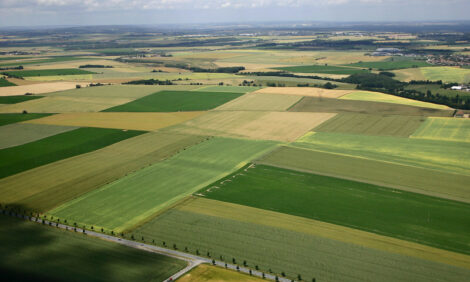



Management Of Fescue Pasture Vital For Winter Use
US - Beef producers, who attended a recent series of pasture management meetings in southern Iowa, learned of the importance of timely and careful stockpiling of fescue pastures.Iowa State University (ISU) Extension and Outreach and Iowa Beef Center (IBC) sponsored the meetings that focused on fescue management and featured ISU Extension beef program specialist Joe Sellers and Craig Roberts of the University of Missouri.
“Producers planning to stockpile fescue pastures for late fall and winter grazing should think about reducing alkaloid levels in the fescue with good management practices,” Mr Sellers said.
“Most tall fescue stands have an endophyte that produces alkaloids that can hurt cattle performance.”
Mr Sellers said producers often think of higher body temperatures, less grass consumption, more time in shade and ponds, and symptoms like loss of tail switches and lameness as negative effects of fescue, but there can be more to that story.
While these are a concern, the biggest effects from fescue are reduced gains, lowered milk production and poor rebreeding rates in cattle.
Mr Roberts said the problem has a high price tag.
“It’s estimated that fescue toxicosis costs the Missouri beef industry over $160 million per year,” Mr Roberts said.
“Similar problems exist in Iowa, but there are several proven management steps that can reduce the problem regardless of the location.”
Practices that help cattle perform better on fescue have to do with managing the levels of alkaloid consumed by cattle.
These practices include reducing spring nitrogen fertilisation rates, providing more diverse stands with legumes and other grasses, rotating cattle to non-fescue based summer pastures, haying or clipping fescue during the late spring and early summer to reduce stems and seed heads, and supplementing feeds like soybean or corn co-products, Mr Roberts said.
More information is available in this presentation by Roberts.
Using several of these steps can alleviate the effects of fescue, but there is no “silver bullet” that will eliminate the problem. Studies looking at other methods like mineral additives and de-worming have found mixed results.
This past winter, several producers had more intense cases of fescue foot and other fescue related problems than during previous years. In part this was due to longer than recommended rest periods, followed by grazing during very cold weather, Mr Sellers said.
“Many years of research in Iowa and Missouri on stockpiling resulted in recommending stockpiling periods of 70 to 100 days."
"Much longer rest periods will increase plant volume, but also will reduce forage quality and increase the alkaloid levels in the grass,” he said.
“If pastures are rested longer than 100 days, producers must be careful when those plots are grazed, graze mature bred cows in mid-pregnancy and dilute the fescue with other feeds. Late summer applications of moderate nitrogen rates can result in more grass growth and extended winter grazing, with less impact on alkaloids.”


